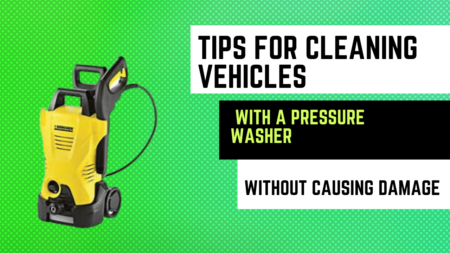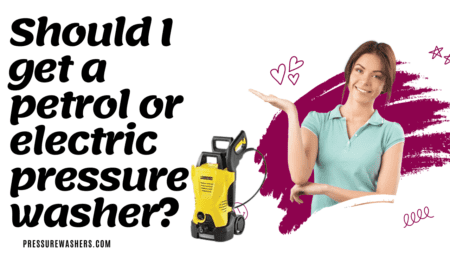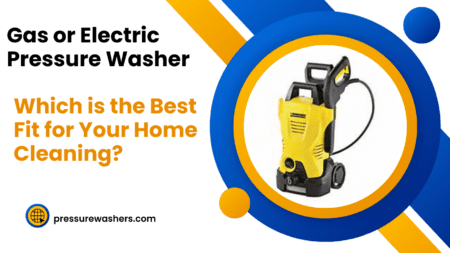
Electric pressure washers are powerful machines that use water and electricity to clean various surfaces. They have pumps that create high-pressure water jets that can remove dirt, grime, mold, and stains. However, these pumps need oil to lubricate their moving parts and prevent friction and overheating. Without proper oil maintenance, you can lose its performance and durability.
If you own a Greenworks electric pressure washer, you might be wondering what kind of oil you need for your machine. It is a leading brand that offer eco-friendly and efficient cleaning solutions. Their pressure washers are designed to use synthetic oil with anti-fling formula that can withstand high temperatures and pressures. The recommended oil is SAE 5W-30 or SAE 10W-30, depending on the ambient temperature and the model of your machine.
In this article, we will discuss how to check, change, and choose the oil. We will also provide some tips and tricks to troubleshoot and fix common problems with the pump.
How to Check the Oil Level in Your Greenworks Pressure Washer Pump and When to Change It
The oil level in pump is an indicator of the health and condition of your machine. If the oil level is too low, it means that is not getting enough lubrication and could be damaged by friction and heat. If the oil level is too high, it means that your pump is overfilled and could leak or spill oil. Either way, you need to adjust the oil level to the optimal range for your machine.
To check the oil level, you need to locate the oil sight glass on the side of the pump. The oil sight glass is a transparent window that shows the oil level inside the pump. You can use a flashlight to see the oil level more clearly. The oil level should be between the minimum and maximum marks on the oil sight glass. If the oil level is below the minimum mark, you need to add more. If the level is above the maximum mark, you need to drain some oil.
You should check level before every use and after every 50 hours of operation. You should also change at least once a year or every 100 hours of operation, whichever comes first. Changing the oil will ensure that your machine runs smoothly and efficiently.
How to Change the Oil and What Tools and Materials You Need
Changing the oil is a simple and easy process that you can do yourself. You will need the following tools and materials:
- A suitable container to collect the used oil
- A funnel to pour the new oil
- A wrench to loosen and tighten the oil drain plug
- A rag to wipe any spills or leaks
- A new oil filter (optional)
- The recommended oil (SAE 5W-30 or SAE 10W-30)
To change the oil, follow these steps:
- Make sure that your machine is turned off and unplugged from the power source. Also, disconnect the water supply and the spray gun from the machine.
- Place the machine on a flat and level surface. Tilt the machine slightly to the side where the oil drain plug is located. The oil drain plug is a small bolt on the bottom of the pump. Place the container under the oil drain plug to catch the used oil.
- Use the wrench to loosen and remove the oil drain plug. Be careful not to lose the oil drain plug or the washer that comes with it. Allow the used oil to drain completely from the pump. You can tilt the machine slightly to the opposite side to drain any remaining oil.
- Once the oil is drained, replace the oil drain plug and the washer and tighten them with the wrench. Do not over-tighten the oil drain plug as it could damage the pump.
- If your machine has an oil filter, you can replace it at this point. The oil filter is a small cylindrical component on the side of the pump. To replace the oil filter, unscrew the old one and screw the new one in its place. Make sure that the oil filter is securely attached to the pump.
- Use the funnel to pour the new oil into the oil fill cap on the top of the pump. The oil fill cap is a large screw cap with a dipstick attached to it. Fill the pump with the recommended oil until the oil level reaches the maximum mark on the oil sight glass. Do not overfill the pump as it could cause oil leaks or spills.
- Replace the oil fill cap and the dipstick and tighten them with your hand. Do not use any tools to tighten the oil fill cap as it could damage the pump.
- Wipe any spills or leaks with the rag. Dispose of the used oil and the old oil filter in an environmentally friendly way. You can take them to a local recycling center or a hazardous waste disposal facility.
- Reconnect the water supply and the spray gun to the machine. Plug the machine into the power source and turn it on. Run the machine for a few minutes to circulate the new oil in the pump. Check for any leaks or abnormal noises from the pump. If everything is normal, your machine is ready to use.
How to Choose the Best Oil and What Factors to Consider
It is an essential component that affects the performance and longevity of your machine. Therefore, you should choose the best and consider the following factors:
- The type of oil: These are designed to use synthetic oil with anti-fling formula that can withstand high temperatures and pressures. Synthetic oil is more durable and efficient than conventional oil and can protect your pump from wear and tear. Anti-fling formula is a special additive that prevents the oil from splashing or flying out of the pump during operation. This reduces the risk of oil contamination and environmental pollution.
- The viscosity of oil: The viscosity of oil is a measure of how thick or thin the oil is and how well it flows in different temperatures. The viscosity of oil is indicated by a number followed by a letter, such as SAE 5W-30 or SAE 10W-30. The lower the number, the thinner the oil and the better it flows in cold temperatures. The higher the number, the thicker the oil and the better it lubricates in hot temperatures. The letter W stands for winter and indicates the oil’s performance in cold temperatures. The second number indicates the oil’s performance in hot temperatures. For example, SAE 5W-30 means that the oil has a viscosity of 5 in cold temperatures and 30 in hot temperatures.
- The ambient temperature: The ambient temperature is the temperature of the air surrounding your machine. The ambient temperature affects the viscosity and flow of the oil in your pump. If the ambient temperature is too low, the oil becomes too thick and does not flow well. If the ambient temperature is too high, the oil becomes too thin and does not lubricate well. Therefore, you should choose the oil that matches the ambient temperature of your location and the season of the year. For example, if you live in a cold climate and use your machine in winter, you should choose SAE 5W-30 oil. If you live in a hot climate and use your machine in summer, you should choose SAE 10W-30 oil.
- The model of your machine: The model of your machine determines the size and capacity of your pump and the amount of oil it needs. Different models of Greenworks pressure washers have different oil specifications and requirements. You should check the user manual of your machine or the manufacturer’s website to find out the exact type and amount of oil for your machine. You should also follow the instructions and recommendations of the manufacturer to ensure the optimal performance and safety of your machine.
How to Troubleshoot Common Problems and How to Fix Them
Greenworks is a brand of electric pressure washers that are known for their reliability and performance. However, like any machine, they may encounter some problems over time due to poor maintenance, wear and tear, or other factors. To troubleshoot and fix these problems, you need to identify the type and cause of the problem, and then apply the appropriate solution.
It is a complex and sophisticated device that can encounter some problems during its operation. Some of the common problems with your Greenworks pressure washer pump are:
Low or no pressure: This problem may occur if the water supply is inadequate, the hose is too small or kinked, the intake filter is clogged, the spray tip is obstructed, or the pump is sucking air. To fix this problem, you need to:
- Ensure that the water source is fully on and unobstructed, and that the hose is at least 1″ (25mm) or 5/8″ (16mm) in diameter.
- Check the hose for any kinks, leaks, or blockages, and replace it if necessary.
- Remove the intake filter and rinse it with warm water to remove any debris.
- Remove the spray tip and clean it with a needle to remove any obstruction.
- Ensure that the hose and fittings are airtight, and squeeze the trigger until water flows steadily from the spray tip to remove any air in the pump.
Pulsing pressure: This problem may occur if the water supply is inadequate, the spray tip is obstructed, the pump is sucking air, or the hose, tip, or trigger is calcified. To fix this problem, you need to:
- Ensure that the water source is fully on and unobstructed, and that the hose is at least 1″ (25mm) or 5/8″ (16mm) in diameter.
- Remove the spray tip and clean it with a needle to remove any obstruction.
- Ensure that the hose and fittings are airtight, and squeeze the trigger until water flows steadily from the spray tip to remove any air in the pump.
- Clean the hose, pressure tip, or trigger with vinegar or a cleaner designed for this purpose to remove any calcium deposits.
Motor won’t start: This problem may occur if the power switch is off, the cord is not plugged in, the extension cord is damaged, too long, or improper, or the circuit breaker is tripped. To fix this problem, you need to:
- Turn the power switch on or to the “1” state.
- Plug in the cord to a working outlet.
- Replace the existing cord with a 25’ (7.6m) 14 AWG cord or a 50’ (15m) 12 AWG core.
- Reset the circuit breaker or replace the fuse if necessary.
Leaking pump or other parts: This problem may occur if the pump seals are worn out, the valves are damaged, or the fittings are loose. To fix this problem, you need to:
- Replace the pump seals or the entire pump assembly if they are worn out or cracked.
- Replace the valves or the entire valve kit if they are damaged or broken.
- Tighten the fittings or replace the o-rings or washers if they are loose or worn out.
By following these tips and recommendations, you can ensure that your Greenworks electric pressure washer delivers the best cleaning power and performance for years to come. If you have any questions or feedback, please feel free to contact us or leave a comment below. Thank you for reading and happy cleaning!





